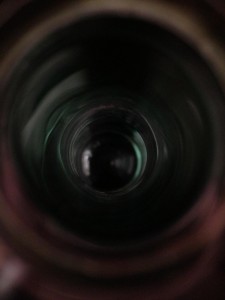Have you ever wondered what goes on in our brain when we are witnessing something moving? As I was crossing the street the other day a car passed right in front of me and seeing that motion let me know it wasn’t safe to cross the street yet. Thinking back to my psychology of perception class I thought of the Reichardt Detector and why I was able to detect motion from the car that was driving past me on the street.
The Reichardt Detector states that the neurons that are a part of detecting and computing motion are velocity sensitive. This means that an object must be travelling past a specific neural circuit at just the right speed in the right direction in order for it to fire. For example, one neuron will fire when an object is moving from left to right at 2 mph but another neuron would fire if that same object was still travelling at 2 mph but travelling from right to left in your visual field. The way motion is detected is when an object first enters your field of vision.
Essentially a neuron, let’s call this cell A that likes the velocity of an object will fire and the signal will go to the delay cell. As the object is still travelling across our field of vision it will move in front of a second neuron, let’s call this cell B. The delay cell holds the message for just the right amount of time it would take for the object to cross paths with the B cell. At this moment the delay cell and the B cell would fire simultaneously to a messenger cell, let’s call this neuron X, and X would pass the motion message onto the bigger cell that let’s our brain know we are seeing a change in an object over time, otherwise known as motion.
Let’s apply the Reichardt Detector to my example of when I was crossing the street. I was crossing College Ave with McLanahan’s to my back and I was looking ahead to the other side of the road when a car travelled past my field of vision. We know that College Ave. is a one-way street that goes from right to left so this means that the set of neurons that fired preferred objects travelling in that direction. Let’s say the car was going 17 mph. Since I detected the car’s motion this means that the neurons that fired preferred objects travelling at that exact speed. The process next is what the specific set of neurons did to signal to my brain that something was moving. Let’s take a simple closer look to get a basic idea of what happens.
From the diagram above neuron A fires when the car first crosses my field of vision. The signal is sent to the delay cell labeled D until the car passes in front of the B cell. At this time the neurons are wired so the cells will fire simultaneously if the car travels past the A cell and B cell to show an object’s change in position over time. Only when both cells fire will the X cell send on the message to the M cell to alert the brain about the moving object. This is exactly what happened when I saw the car pass through my visual field using Reichardt’s Detector.







